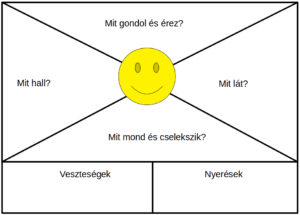How to Design a Mobile Application in 5 Steps - Part 1
The Idea
📅 2020.05.06 - 👤 Borbély Viktor
In this 5-part series, I collect the thoughts and milestones that I encountered in connection with each of my projects.
At the beginning, I felt that an app would be good for anything. This thought, according to my mind, stuck in my head from Steve Jobs: “…in the future from now on, an app will be needed for everything…” - he said at the iPhone 1 presentation. At least it sounded something very similar.
Well, I wasn’t far wrong with this, although if we think about why (?) an app is needed, we have to search for quite a long time. What is it that a responsive website can’t do? Of course there is such a thing, but let’s always keep this in mind! (The case of the hammer and nail, you see.)
It’s a fact that creating a mobile application is a magical thing: it runs natively at breakneck speed on your phone, you can share it with anyone, it’s colorful-fragrant, works offline, etc. In short, it’s an incomparable feeling.
If similar emotions are working in you while reading the above, then let’s get started!
The main steps
- The Idea
- Validation
- Interface Design
- Creating MVP
- Publishing Live Application
The Idea
Everyone has an idea, this usually doesn’t cause a problem. If it still doesn’t come on its own, there are professional procedures for how to coax that certain idea out of our brain convolutions. It’s less scientific if we lock ourselves in a room and don’t come out until we have a sound idea. You can already start with this.
Often something quite fantastic can come out of the most banal, most outrageous, childish idea. If you sweep through the list of applications on your phone, you will most likely agree with me.
If we’re done finding the idea, it’s worth elaborating a bit, playing with the possibilities. Out with the Post-its, you can stick, draw in a notebook.
Our idea will have a main line. Such a point that we will always return to, no matter how we turn the possibilities. This will be the core that establishes the final product. This is an important realization: an application should do one thing, but do it well. It’s worth thinking through our idea this way. What problem does it solve? Whose problem does it solve?
There are techniques for the above questions with which we can develop these. One such is the “Empathy map”.

Perform the task alone or in a group. Download this little help, print it on an A3 or A2 sheet, and stick the answers on it with Post-its. We play through the sub-areas if we select a specific target person (persona) and address our questions to them. We sit in their situation and look around that:
- What they think and feel
- What do they hear day after day?
- What do they see day after day?
- What do they say and how do they act?
Then also write in what their Losses (problems) might be, which we will solve for them? What will be their Gains if they use our product? From this, a bunch of hypotheses will already come out that we can validate.
In the next part, we continue with validation. If you liked this part, subscribe to the newsletter to be notified about new parts. I’m curious about your opinion, write to me.